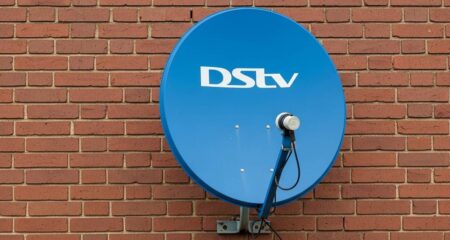[By Duncan McLeod] Television in SA is on the verge of its biggest changes since its introduction in 1976. Two new pay-TV operators will finally launch soon to take on DStv, and the move to digital terrestrial television will change the competitive dynamics of the industry forever.
It’s taken several years of commercial and legal drama, but South Africans are finally set to get two new competitors slugging it out in pay television, ending MultiChoice’s long-standing monopoly over digital satellite TV.
On Digital Media (ODM) and Super 5 Media (the latter is what emerged from the now-defunct Telkom Media) are both set to launch pay-TV offerings in 2010.
The two companies are playing their cards close to their chests, but ODM is expected to launch a service in the next few months, with Super 5 Media following later in the year with both satellite and Internet Protocol TV (IPTV) services delivered over the same fixed-line broadband connections that provide Internet access into people’s homes.
Super 5 Media is understood to be planning to offer three bouquets, thus appealing to a wide cross-section of the market. Its IPTV offering will appeal exclusively to high-end consumers.
Both ODM and Super 5 Media have their work cut out. The mere threat of competition has been enough for Naspers-controlled MultiChoice to lift its game significantly in the past two years.
The DStv operator has strengthened its offering substantially, launching high-definition channels and new content. It is also aggressively selling personal video recorders capable of recording live television.
MultiChoice, which bought the rights to broadcast Premier Soccer League matches, has also launched a bouquet of channels, DStv Compact, to target the same emerging black middle class that ODM has long identified as key to its launch into the market being a success.
Even though one of the prospective pay-TV rivals, e.tv owner e-Sat, has pulled out of the market, ODM and Super 5 Media will have to pull out all the stops if they’re going to win meaningful market share from an in-shape MultiChoice.
Pay-TV isn’t the only area that’s set to become more competitive. The move to digital terrestrial television (DTT) is also set to up the competition in free-to-air broadcasting.
But news last week that SA’s full migration to DTT will take longer than expected is a blow to South Africans holding out for better TV.
The move to DTT involves shifting terrestrial broadcasts (the SABC channels, e.tv and M-Net) from an analogue to a digital signal. Consumers will need to buy a set-top box to receive the new signals.
The technology will free up additional radio frequency spectrum that can then be used by telecommunications operators to provide wireless broadband services.
Because DTT uses comparatively little spectrum per channel, new terrestrial TV channels can also be launched, ensuring a more competitive market.
But the Independent Communications Authority of (Icasa), which regulates broadcasting, has delayed the full migration to DTT until 2013 at the earliest.
Cabinet had previously said the process would be completed by November 2011. Now Icasa says delays in the availability of digital set-top boxes, particularly of decoders that will be subsidised for the poor, has delayed implementation.
Despite the delay, broadcasters have already begun testing digital broadcasts. If you have a digital receiver, you can already watch digital broadcasts, which include channels not currently available on analogue.
Once the spectrum has been freed up from the full migration to DTT, Icasa will have the unenviable task of deciding which broadcasters will be licensed to launch new channels.
Though South Africans have to wait until at least 2013, it seems likely that the airwaves will be awash with new terrestrial TV channels in a few years.
Coupled with the competition in pay-TV, local couch potatoes will never have had it so good.
- McLeod is editor of TechCentral; this column is also published in Financial Mail
- Subscribe to our free daily newsletter
- Follow us on Twitter or on Facebook





